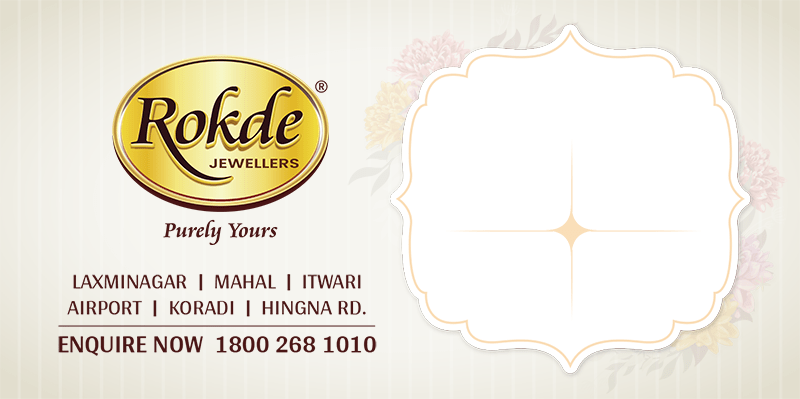
Nagpur: Shri Devasthan Panch Committee, Itwari Bardana Market, Nehru Putala has organised main programme of ‘Kali Marbat’ celebration at its premises from August 30 t0 31. The programme started with Pansupari programme at Shri Hanuman Mandir on August 30 . The procession of immersion of Kali Marbat will start on August 31 at 10 am.
The Marbat procession will pass through the regular routes and will end at the premises opposite Ramkrishna Flour Mills, Bagadganj. Tanha Pola programme will be held at 5 pm. Executive committee members of Shri Devasthan Panch Committee including President, Milind Madne; Secretary, Devendra Harde; Treasurer, Nikhil Tidke; and members of Kali Marbat Festival Committee including Presidents, Gaurav Harde, Jitendra Gupta, Rahul Harde; Secretaries Nikhil Harde, Nilesh Mahajan, Prashant Gupta; treasurers, Nehul Gupta, Roshan Harde, Sachin Gupta, Subhan Qureshi; Vice Presidents, Rakesh Harde, Nikhil Gupta, Akash Mantnawar and others have appealed the citizens to attend the programmes in large numbers.
‘Pili Marbat’ procession on Aug 31
Marbat Nagoba Devasthan, Tarhane Teli Samaj has organised a grand procession of Pivali Marbat on August 31 at 9 am. Earlier, a programme of Pansupari will be held at Tarhane Teli Samaj Pivali Marbat on August 30 at 7 pm.
The procession will start after the pujan being performed by Deputy Mayor, Deepraj Pardikar; Ajaykumar Malaviya, Police Inspector, Tehsil Police Station. The procession will start from Pivali Marbat Nagoba Devi Devasthan Panch Committee, Jagnath Budhwari at 9 am.
The Marbat procession will pass through Panchpaoleshwar Shankar Mandir, Golibar Square, Bharat Mata square, Maskasaath, Nehru Putala where Pili Marbat will meet with Kali Marbat at 11 am and joint procession will start from Nehru Putala and will pass through Marwadi Square, Mirchi Bazar, Amardeep Cinema, Shahid Chowk, Gandhi Putala, Badkas Chowk, Mahal, Kotwali, Gandhi Gate, Agresar Chowk, Ganjakhet Square, Golibar Square, Bharat Mata Square, Pivali Marbat chowk and will immerse at Tandapeth Naik Talao. President Prakash Gaurkar; Secretary, Vijay Khopde; Treasurer, Devidas Gabhane; Joint Secretary, Kishore Malkar; Manohar Motghare, Sharad Takitkar, Devanand Ambagade, Chandrashekhar Deshmukh, Dharmendra Sathwane, Jaywant Takitkar, Bhushan P Khopde, Bhaskar Takitkar, Swanil Motghare, Shubham Gabhane, Nitin Gaurkhede, Kishore Khode, Shubham Gaurkar, Digambar Deshmukh, Kunal Motghare, Atul Bhute and others are working hard for the success.Nagpurians have a novel way of wishing away everything that troubles society, in the form of the Marbat. Started in its present form in 1885 to protest against the British, the Marbat procession is unique to the Orange City and is a major attraction at the end of the holy month of Shravan.
The unique tradition has entered in 140th year
The last day of Shravan, celebrated with the festival of Pola, marks the end of monsoon. This season brings with it many waterborne diseases and pests which are a nuisance to people.
Legend has it that the Teli community would take small dolls out in procession after Pola would be celebrated. These dolls would be representative of all the diseases and evil spirits that people believed pestered them. These would then be burnt, symbolising the destruction of everything evil.
During pre-Independence, the dolls also became symbolic of the oppressive British regime. This led to the creation of the Pili (Yellow) Marbat, a gigantic female figure connoting the pale skin of the foreigners. Along with this, a Kali (Black) Marbat- symbolic of a woman from the royal Bhonsle clan who colluded with the British- and a male figure, Badgya, began to be paraded around before converging in a field to be burnt. This is a practice that has continued to this day.
The processions, which can be seen in the East Nagpur localities of Itwari, Mahal and Jagnath Budhwari, are carried out with slogans . In fact, anything that has been a source of annoyance to the people- corruption, terrorism, a political figure, an epidemic- finds itself chanted as a slogan.
The Marbat, therefore, gives vent to people’s frustrations, and acts as a means of protest, albeit with an element of lighthearted (sometimes light-headed) fun.















